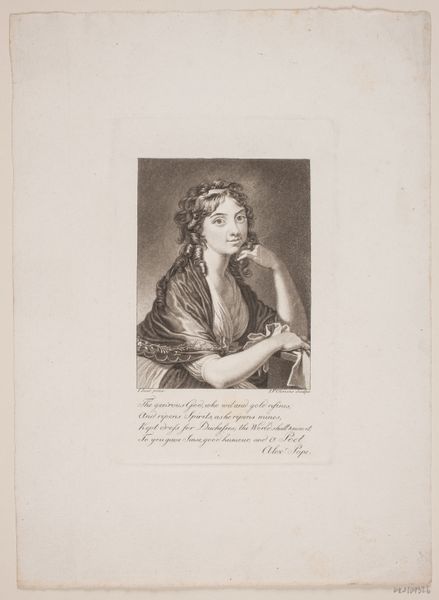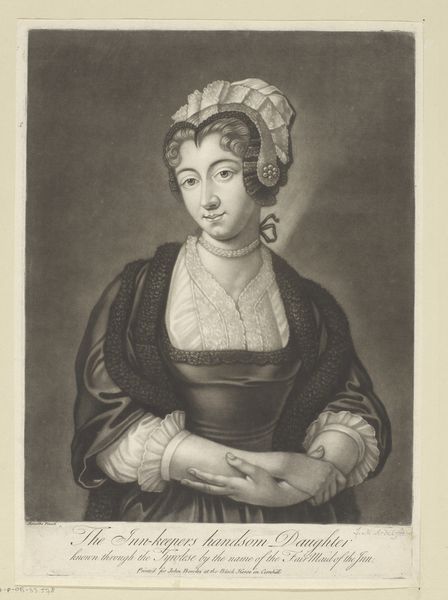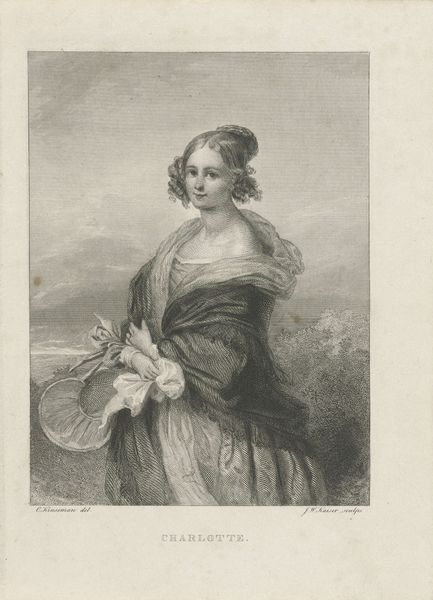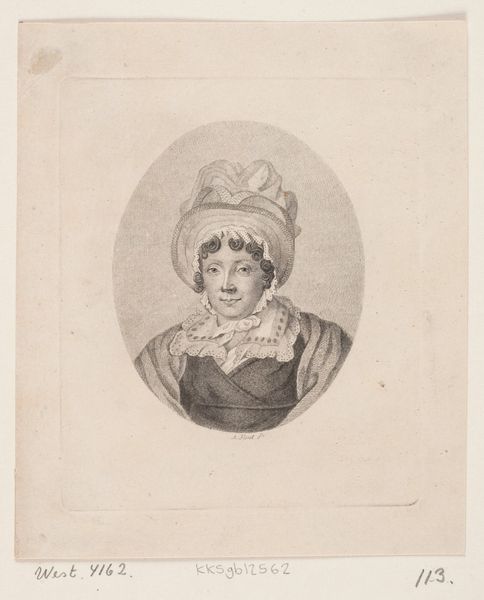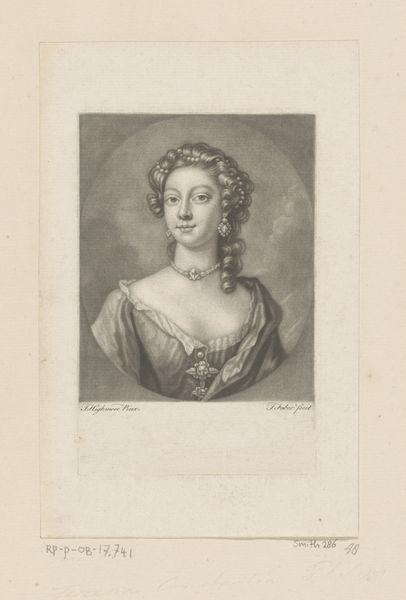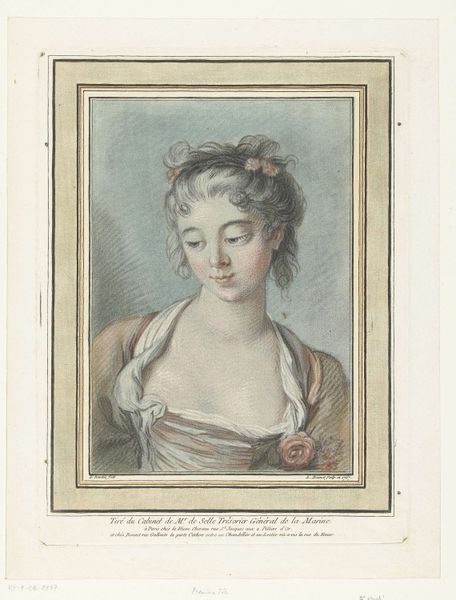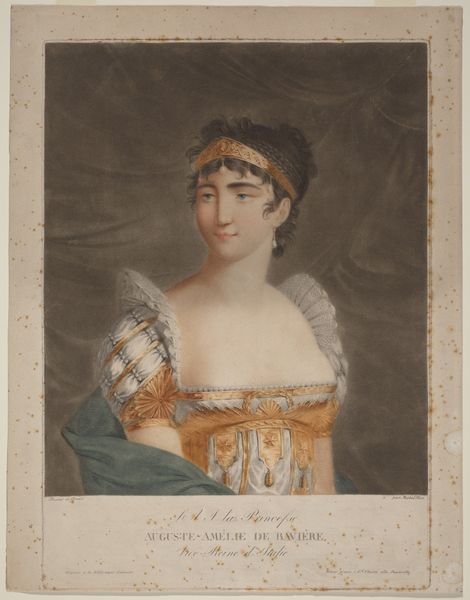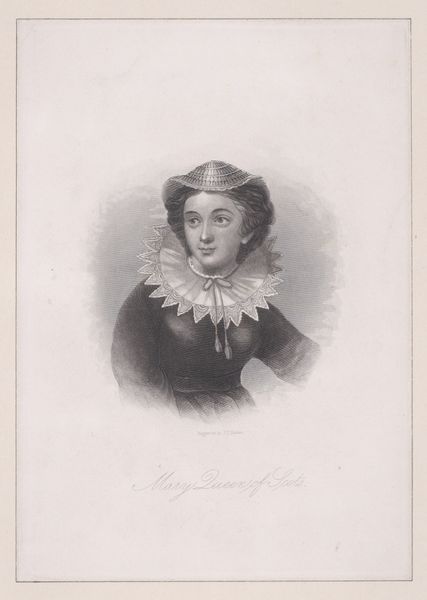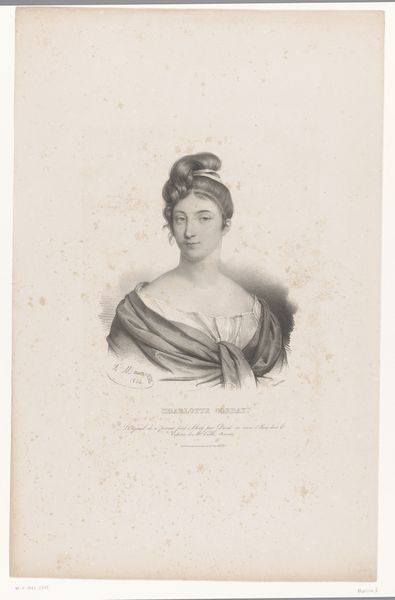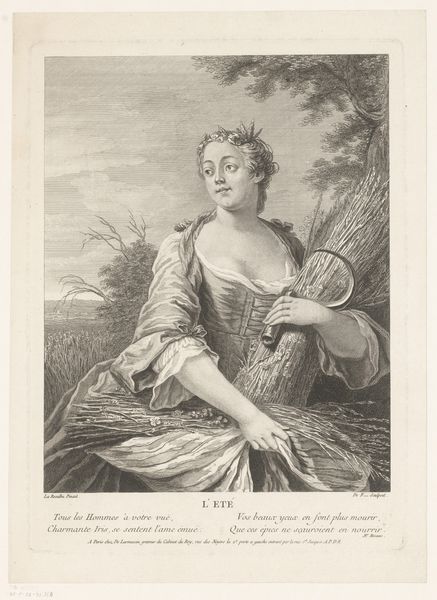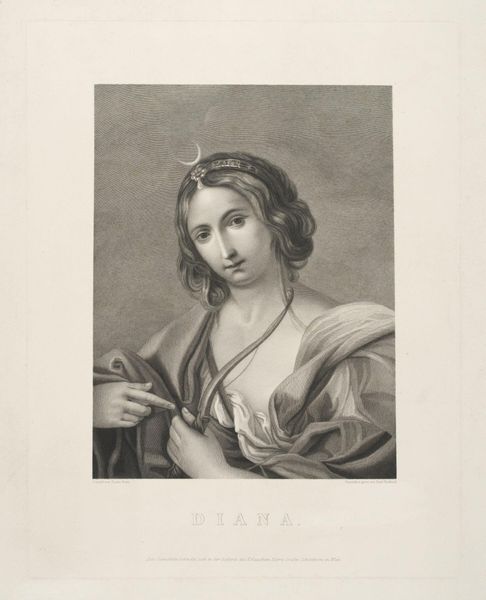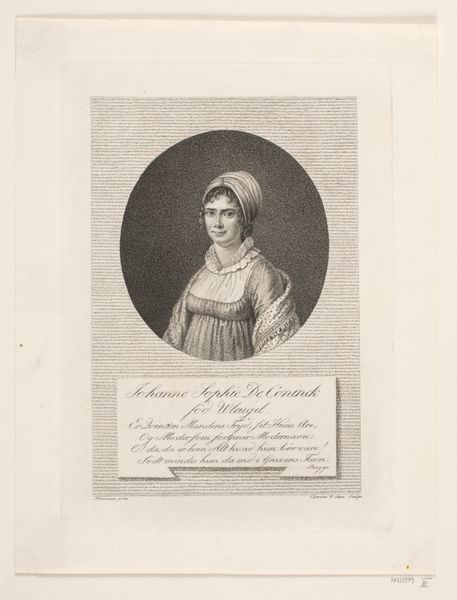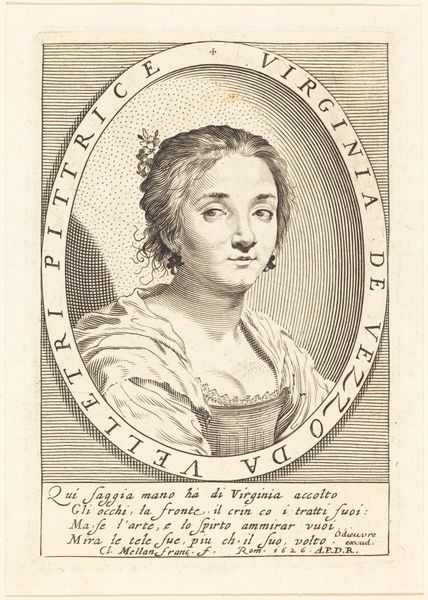
Dimensions: 187 mm (height) x 121 mm (width) (bladmaal), 151 mm (height) x 95 mm (width) (plademaal), 100 mm (height) x 75 mm (width) (billedmaal)
Editor: Here we have J.F. Clemens' rendering of "Thomasine Gyllembourg-Ehrensvärd," likely completed between 1748 and 1831. The aquatint and engraving feel so delicate. What draws your eye in this portrait? Curator: I'm interested in the way the aquatint medium democratizes the portrait. Engravings allowed for relatively cheap reproduction. This opened up portraiture, previously the domain of the wealthy, to a wider audience and shifted the means of artistic consumption. Note the integration of text within the print - it literally embeds authorship and interpretation directly into the reproductive process. Editor: So, the choice of material impacts who could possess and experience the image, and that changes its value? Curator: Precisely. Before photography, reproductive prints like these circulated images and ideas through various social classes. Consider also the labor involved, the artisan’s skill translated into multiple identical copies – a direct link to industrial production emerging in this era. Editor: So it is not only about what is depicted but about the printing process and the economic implications it holds. Are the clothes also a key factor of class and industrial consumption? Curator: Yes, it all ties together. Clothing materials and design denote class and consumerism during this era and invite questions regarding production methods, international trade routes, or manufacturing of goods, all connected to the print itself, and, equally so, to its possible consumers. Editor: I see. It is a really powerful observation that everything ties to how the work was produced. This gives me a completely different perspective now. Thank you! Curator: My pleasure. Considering art through the lens of materials and processes can open up many exciting avenues of thought!
Comments
No comments
Be the first to comment and join the conversation on the ultimate creative platform.
